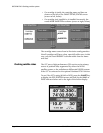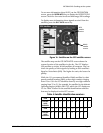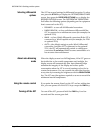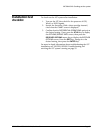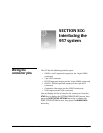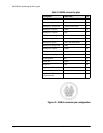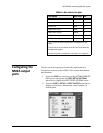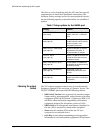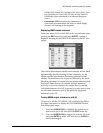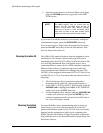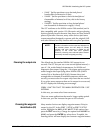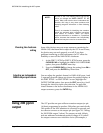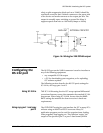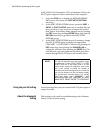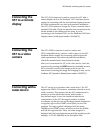
SECTION SIX: Interfacing the 957 system
Page 42 957 INSTALLATION MANUAL, Revision C1
The devices you’re interfacing with the 957 may have special
requirements, so check their installation instructions. The
Northstar factory settings are fine for most peripheral devices,
but the following options, as described below, are available if
needed.
Choosing the output
format
The 957 outputs navigation data in any of several standard
formats as required by the receiving, or “listener,” device. The
OUTPUT FORMAT option provides the following choices:
• NMEA 0183 Version 2.1 is a general-use interface output
format used by most autopilots, radars, plotters, and other
equipment. (NMEA 0183 Version 1.5 sentences—BWC, GLL,
and RNN—allow backwards compatibility with marine
equipment designed for this earlier version of 0183).
• NMEA 0180 is an infrequently used format, developed in
the late 1970’s, required by certain older autopilots.
•
None turns the outputs off for when the 957 isn’t
connected to an external device.
•
0183 Ray is used when transmitting/receiving position
information to or from Raytheon equipment. In Raytheon’s
Table 7: Setup options for the NMEA port
Setting Choices
OUTPUT FORMAT
(see below)
choose 0183 V2.1, 0180,
NONE, 0183 RAY, or DATAM
CDX
NMEA 0183 TALKER ID
(see page 44)
choose GP, LC, or II, to make
the 957 look like a GPS receiver,
Loran-C receiver, or an
“integrated instrument”
NMEA 0183 LL PRECISION
(see page 44)
choose hundredths of minutes,
thousandths of minutes, or
ten-thousandths of minutes
OUTPUT RATE
(see page 45)
choose 2 to 999 seconds for the
interval at which data is sent to
the external device
NMEA 0183 WAYPT ID AS
(see page 45)
choose NAME or NUMBER for
the identifier of waypoints sent to
the external device
NMEA 0183 CHECKSUMS
(see page 46)
choose ON or OFF for
compatibility with some older
devices
OUTPUT DATUM
(see page 46)
choose from a list of datums to
apply to your lat/lon coordinates,
if necessary



